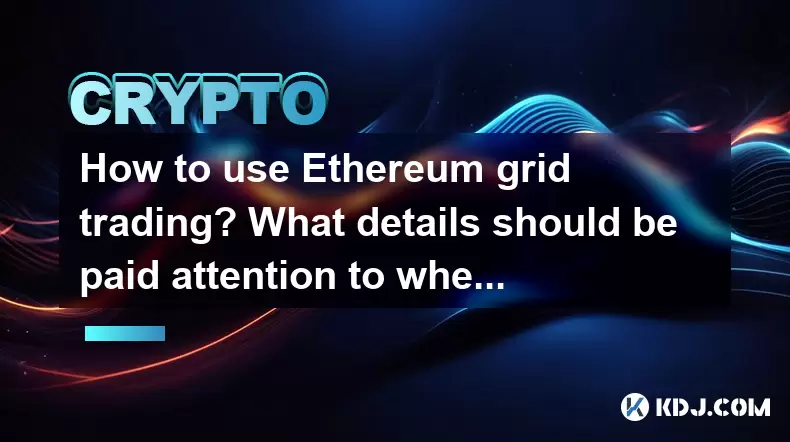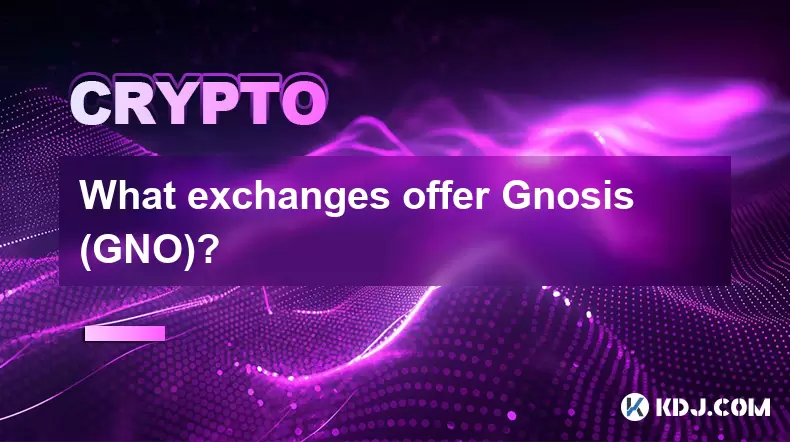-
 Bitcoin
Bitcoin $119000
-2.21% -
 Ethereum
Ethereum $4315
1.01% -
 XRP
XRP $3.151
-3.11% -
 Tether USDt
Tether USDt $0.0000
0.00% -
 BNB
BNB $808.5
-0.71% -
 Solana
Solana $175.8
-4.21% -
 USDC
USDC $0.9999
0.00% -
 Dogecoin
Dogecoin $0.2250
-3.92% -
 TRON
TRON $0.3469
1.77% -
 Cardano
Cardano $0.7818
-3.81% -
 Chainlink
Chainlink $21.47
-2.10% -
 Hyperliquid
Hyperliquid $43.30
-6.81% -
 Stellar
Stellar $0.4370
-2.84% -
 Sui
Sui $3.682
-4.40% -
 Bitcoin Cash
Bitcoin Cash $590.8
2.67% -
 Hedera
Hedera $0.2484
-5.20% -
 Ethena USDe
Ethena USDe $1.001
0.00% -
 Avalanche
Avalanche $23.10
-4.29% -
 Litecoin
Litecoin $119.2
-3.96% -
 Toncoin
Toncoin $3.409
0.90% -
 UNUS SED LEO
UNUS SED LEO $9.016
-1.29% -
 Shiba Inu
Shiba Inu $0.00001304
-3.82% -
 Uniswap
Uniswap $11.18
1.33% -
 Polkadot
Polkadot $3.913
-3.51% -
 Cronos
Cronos $0.1672
-3.08% -
 Dai
Dai $1.000
0.02% -
 Ethena
Ethena $0.7899
-4.70% -
 Bitget Token
Bitget Token $4.400
-1.23% -
 Pepe
Pepe $0.00001132
-5.93% -
 Monero
Monero $257.9
-6.44%
How to use Ethereum grid trading? What details should be paid attention to when setting parameters?
To use Ethereum grid trading effectively, select a platform, set a price range, and define grid parameters like spacing and investment amount, while monitoring market conditions closely.
May 20, 2025 at 01:42 am

How to Use Ethereum Grid Trading? What Details Should Be Paid Attention to When Setting Parameters?
Grid trading is a popular trading strategy within the cryptocurrency market, particularly for assets like Ethereum. This strategy involves setting up a grid of buy and sell orders at predetermined price levels, allowing traders to profit from the volatility of the market. In this article, we will explore how to use Ethereum grid trading and the critical details to consider when setting parameters.
Understanding Ethereum Grid Trading
Ethereum grid trading involves creating a grid of orders within a specified price range. When the price of Ethereum moves, the grid automatically executes buy and sell orders, aiming to capture small profits from each price movement. This strategy can be particularly effective in a sideways market, where the price oscillates within a certain range.
To begin using grid trading for Ethereum, you will need to select a trading platform that supports this strategy. Many cryptocurrency exchanges and trading bots offer grid trading features. Once you have chosen a platform, you can set up your grid based on your trading preferences and market analysis.
Setting Up Your Ethereum Grid
Setting up an Ethereum grid involves several key steps. Here’s how you can do it:
- Choose a Trading Platform: Select a platform that supports grid trading, such as Binance, KuCoin, or a trading bot like 3Commas.
- Determine the Price Range: Decide on the upper and lower bounds of your grid. This range should reflect your analysis of Ethereum’s potential price movements.
- Set the Number of Grids: Determine how many price levels you want within your grid. More grids can capture more price movements but may also increase transaction costs.
- Define the Grid Spacing: Decide on the price difference between each grid level. A smaller spacing can lead to more frequent trades but may also increase trading fees.
- Set the Investment Amount: Allocate the amount of Ethereum or the equivalent in another cryptocurrency that you are willing to invest in the grid.
Key Parameters to Consider
When setting up your Ethereum grid, paying attention to the following parameters is crucial:
- Price Range: The upper and lower bounds of your grid should be set based on your analysis of Ethereum’s potential price movements. A wider range may capture more significant price swings but could also increase the risk of larger losses.
- Number of Grids: The number of grids within your range affects how frequently your orders will be executed. A higher number of grids can lead to more trades and potentially higher profits, but it also increases transaction costs.
- Grid Spacing: The spacing between each grid level determines how sensitive your grid is to price movements. Smaller spacing can result in more frequent trades but may also increase trading fees.
- Investment Amount: The amount of Ethereum you invest in the grid directly impacts your potential profits and losses. It’s essential to allocate an amount that you are comfortable with, considering the volatility of the cryptocurrency market.
- Profit and Loss Settings: Many platforms allow you to set profit targets and stop-loss levels for your grid. These settings can help you manage your risk and lock in profits.
Executing and Monitoring Your Grid
Once your Ethereum grid is set up, it will automatically execute buy and sell orders based on the parameters you have defined. It’s important to monitor your grid regularly to ensure it is performing as expected and to make adjustments if necessary.
- Monitor Market Conditions: Keep an eye on Ethereum’s price movements and market conditions. If the market moves outside your grid’s range, you may need to adjust your grid or close it to prevent losses.
- Adjust Parameters: Based on your monitoring, you may need to adjust the price range, number of grids, grid spacing, or investment amount to optimize your grid’s performance.
- Review Performance: Regularly review your grid’s performance to understand its profitability and make informed decisions about future trades.
Managing Risks in Ethereum Grid Trading
Grid trading, while potentially profitable, comes with its own set of risks. Here are some strategies to manage these risks:
- Use Stop-Loss Orders: Many platforms allow you to set stop-loss orders for your grid. These can help limit your losses if the market moves against your grid.
- Diversify Your Grids: Instead of putting all your investment into one grid, consider setting up multiple grids with different parameters. This can help spread your risk and increase your chances of capturing profitable price movements.
- Stay Informed: Keep up-to-date with news and events that could affect Ethereum’s price. Sudden market movements can impact your grid’s performance, so being informed can help you make timely adjustments.
- Set Realistic Expectations: Grid trading is not a guaranteed way to make profits. Set realistic expectations and be prepared for potential losses. It’s important to only invest what you can afford to lose.
Optimizing Your Ethereum Grid Trading Strategy
To optimize your Ethereum grid trading strategy, consider the following tips:
- Backtest Your Strategy: Many platforms offer backtesting features that allow you to test your grid trading strategy against historical data. This can help you refine your parameters and improve your chances of success.
- Start Small: If you are new to grid trading, start with a small investment to gain experience and understand how your grid performs in different market conditions.
- Learn from Experience: As you gain more experience with grid trading, you will learn which parameters work best for you. Use this knowledge to refine your strategy and improve your results.
- Consider Market Trends: Pay attention to broader market trends and adjust your grid accordingly. If the market is trending strongly in one direction, you may need to adjust your grid’s range or spacing to capture these movements.
Frequently Asked Questions
Q: Can I use grid trading for other cryptocurrencies besides Ethereum?
A: Yes, grid trading can be applied to other cryptocurrencies as well. The principles remain the same, but you will need to adjust your parameters based on the specific volatility and price movements of the cryptocurrency you are trading.
Q: How do I know if my grid trading strategy is working?
A: To determine if your grid trading strategy is working, regularly review your grid’s performance. Look at metrics such as the number of trades executed, the average profit per trade, and the overall profitability of your grid. If your grid is consistently profitable, it is likely working well.
Q: What should I do if the market moves outside my grid’s range?
A: If the market moves outside your grid’s range, you have a few options. You can adjust your grid’s range to capture the new price levels, close your grid to prevent further losses, or set up a new grid with different parameters to take advantage of the new market conditions.
Q: Is grid trading suitable for beginners?
A: Grid trading can be suitable for beginners, but it’s important to start with a small investment and thoroughly understand the strategy before committing more funds. Beginners should also consider using platforms that offer user-friendly interfaces and educational resources to help them learn.
Disclaimer:info@kdj.com
The information provided is not trading advice. kdj.com does not assume any responsibility for any investments made based on the information provided in this article. Cryptocurrencies are highly volatile and it is highly recommended that you invest with caution after thorough research!
If you believe that the content used on this website infringes your copyright, please contact us immediately (info@kdj.com) and we will delete it promptly.
- Japan, Bitcoin, and Treasuries: A New Era of Corporate Finance?
- 2025-08-12 18:30:12
- Bitcoin Bull Market: Decoding the Indicators for the Next Big Move
- 2025-08-12 18:30:12
- Do Kwon's Terra Collapse: From 'Not Guilty' to Guilty Plea?
- 2025-08-12 18:50:12
- Material Efficiency, Traceability, and Trust: The New Pillars of Sustainability
- 2025-08-12 18:50:12
- PumpFun (PUMP) Price: Riding the Meme Coin Wave or Facing a Wipeout?
- 2025-08-12 16:50:12
- Uniswap's Legal Clarity Fuels Price Target: Will UNI Hit $12.85?
- 2025-08-12 17:30:13
Related knowledge

How to purchase Aragon (ANT)?
Aug 09,2025 at 11:56pm
Understanding Aragon (ANT) and Its PurposeAragon (ANT) is a decentralized governance token that powers the Aragon Network, a platform built on the Eth...

Where to trade Band Protocol (BAND)?
Aug 10,2025 at 11:36pm
Understanding the Role of Private Keys in Cryptocurrency WalletsIn the world of cryptocurrency, a private key is one of the most critical components o...

What is the most secure way to buy Ocean Protocol (OCEAN)?
Aug 10,2025 at 01:01pm
Understanding Ocean Protocol (OCEAN) and Its EcosystemOcean Protocol (OCEAN) is a decentralized data exchange platform built on blockchain technology,...

How to invest in Kyber Network Crystal v2 (KNC)?
Aug 12,2025 at 05:21pm
Understanding Kyber Network Crystal v2 (KNC)Kyber Network is a decentralized liquidity hub built on the Ethereum blockchain that enables instant token...

Where can I buy UMA (UMA)?
Aug 07,2025 at 06:42pm
Understanding UMA and Its Role in Decentralized FinanceUMA (Universal Market Access) is an Ethereum-based decentralized finance (DeFi) protocol design...

What exchanges offer Gnosis (GNO)?
Aug 12,2025 at 12:42pm
Overview of Gnosis (GNO) and Its Role in the Crypto EcosystemGnosis (GNO) is a decentralized prediction market platform built on the Ethereum blockcha...

How to purchase Aragon (ANT)?
Aug 09,2025 at 11:56pm
Understanding Aragon (ANT) and Its PurposeAragon (ANT) is a decentralized governance token that powers the Aragon Network, a platform built on the Eth...

Where to trade Band Protocol (BAND)?
Aug 10,2025 at 11:36pm
Understanding the Role of Private Keys in Cryptocurrency WalletsIn the world of cryptocurrency, a private key is one of the most critical components o...

What is the most secure way to buy Ocean Protocol (OCEAN)?
Aug 10,2025 at 01:01pm
Understanding Ocean Protocol (OCEAN) and Its EcosystemOcean Protocol (OCEAN) is a decentralized data exchange platform built on blockchain technology,...

How to invest in Kyber Network Crystal v2 (KNC)?
Aug 12,2025 at 05:21pm
Understanding Kyber Network Crystal v2 (KNC)Kyber Network is a decentralized liquidity hub built on the Ethereum blockchain that enables instant token...

Where can I buy UMA (UMA)?
Aug 07,2025 at 06:42pm
Understanding UMA and Its Role in Decentralized FinanceUMA (Universal Market Access) is an Ethereum-based decentralized finance (DeFi) protocol design...

What exchanges offer Gnosis (GNO)?
Aug 12,2025 at 12:42pm
Overview of Gnosis (GNO) and Its Role in the Crypto EcosystemGnosis (GNO) is a decentralized prediction market platform built on the Ethereum blockcha...
See all articles

























































































